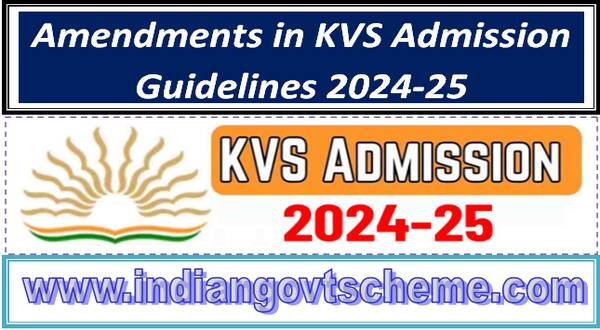Report of All India Survey on Higher Education (AISHE), 2019-20
LOK SABHA
Report of All India Survey on Higher Education (AISHE), 2019-20
1136. SHRIMATI SANGEETA KUMARI SINGH DEO
DR. SUKANTA MAJUMDAR
SHRI RAJVEER SINGH (RAJU BHAIYA)
SHRI BHOLA SINGH
SHRI RAJA AMARESHWARA NAIK
DR. JAYANTA KUMAR ROY
SHRI VINOD KUMAR SONKAR
Will the Minister of EDUCATION be pleased to state:
(a) whether the Government has released the Report of All India Survey on Higher Education (AISHE) 2019-20;
(b) if so, whether India is lagging behind other countries in different educational indicators like Gross Enrollment Ratio, Gender Gap Index etc.;
(c) if so, the details thereof;
(d) whether the Government has approved the release of Performance Grading Index (PGI) 2019-20 for States and Union Territories;
(e) if so, the details thereof;
(f) whether there is an urgent need for reforms in education system to improve rankings of educational institutions in various national and international indexes; and
(g) if so, the details thereof and the steps taken/being taken by the Government in this regard?
(SHRI DHARMENDRA PRADHAN)
(a) Yes, Sir.
(b) India is ahead of many countries in terms of Gross Enrolment Ratio (GER) and is improving its GER every year. Further, the Gender Parity Index (GPI) in Higher Education for India has quite improved from 0.92 in 2015-16 to 1.01 in 2019-20 indicating increased parity between males and females in the relative access to higher education in the country.
(c) As far as the Gross Enrolment Ratio in Higher Education is concerned, (UIS data available at http://data.uis.unesco.org/ Sustainable Development Goals: Gross enrolment ratio for tertiary education by sex), India ranks nearly in the middle of various countries in 2019, the latest year for which comparable data is available. A detailed comparison of India with some selected countries at various stages of development, including BRICS and SAARC nations is in the table below.
|
|
||||||
|
Year |
||||||
|
Country |
2014 |
2015 |
2016 |
2017 |
2018 |
2019 |
|
Afghanistan |
8.2 |
.. |
.. |
.. |
9.7 |
.. |
|
Pakistan |
9.7 |
9.2 |
9.0 |
9.3 |
9.0 |
.. |
|
Bangladesh |
13.9 |
.. |
17.9 |
18.2 |
20.6 |
24.0 |
|
Ghana |
15.4 |
15.7 |
15.5 |
16 |
15.7 |
17.2 |
|
Nepal |
16.0 |
15.0 |
11.6 |
11.6 |
12.4 |
13.3 |
|
Sri Lanka |
19.2 |
19.8 |
18.8 |
19 |
19.6 |
21.1 |
|
South Africa |
19.8 |
.. |
20.9 |
22.4 |
23.8 |
.. |
|
Azerbaijan |
23.2 |
25.5 |
25.9 |
27.1 |
27.7 |
31.5 |
|
India |
25.4 |
26.8 |
26.8 |
27.4 |
28.1 |
28.6 |
|
Indonesia |
30.9 |
33.3 |
35.4 |
36.4 |
36.3 |
.. |
|
Malaysia |
39.5 |
45.6 |
46.8 |
43.7 |
45.1 |
43.1 |
|
China |
42.4 |
46.0 |
48.0 |
49.1 |
50.6 |
53.8 |
|
Brazil |
50.2 |
51.3 |
50.7 |
51.6 |
53.3 |
.. |
|
United Kingdom |
56.6 |
56.5 |
58.4 |
60.0 |
61.4 |
.. |
|
Switzerland |
57.2 |
57.7 |
58.0 |
59.6 |
61.4 |
.. |
|
France |
61.5 |
62.8 |
64.7 |
65.8 |
67.6 |
.. |
|
Italy |
61.7 |
60.9 |
60.9 |
61.9 |
64.3 |
.. |
|
Canada |
65.6 |
64.8 |
66.4 |
68.9 |
70.1 |
.. |
|
Israel |
66.9 |
65.5 |
64.9 |
63.4 |
61.5 |
.. |
|
Belgium |
73.0 |
74.6 |
75.9 |
79.7 |
78.9 |
.. |
|
Russian Federation |
78.5 |
79.9 |
80.6 |
81.9 |
84.6 |
.. |
|
United States of America |
88.6 |
88.9 |
88.8 |
88.2 |
88.3 |
.. |
|
Republic of Korea |
94.9 |
94.3 |
94.0 |
94.3 |
95.9 |
.. |
- A severely fragmented higher educational ecosystem;
- Less emphasis on the development of cognitive skills and learning outcomes;
- A rigid separation of disciplines, with early specialisation and streaming of students into narrow areas of study;
- Limited teacher and institutional autonomy;
- Lesser emphasis on research at most universities and colleges, and lack of competitive peer reviewed research funding across disciplines
- An ineffective regulatory system; and
- Large affiliating universities resulting in low standards of undergraduate education.
- Establishing/transforming at least one HEI into large multidisciplinary HEI in or near every district
- A stage wise mechanism for granting graded autonomy to colleges through a transparent system of graded accreditation
- To end the fragmentation of higher education system by transforming HEIs into multidisciplinary universities.
- Granting autonomy to Institutions and faculty to innovate on matters of curriculum, pedagogy, and assessment within a broad framework of higher education qualifications.

